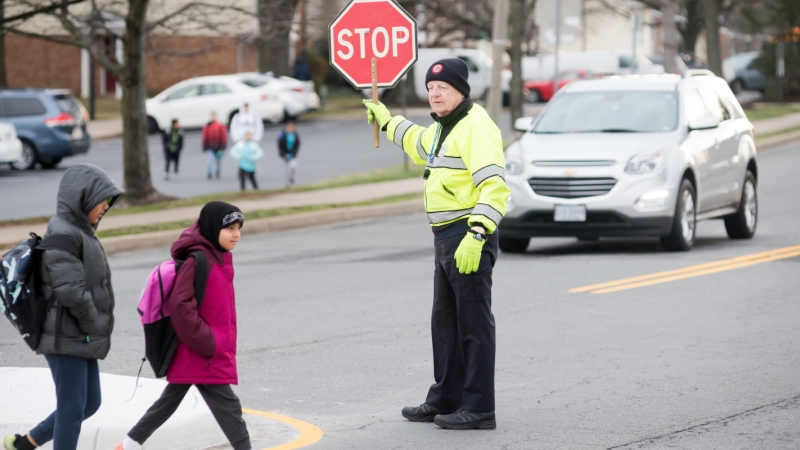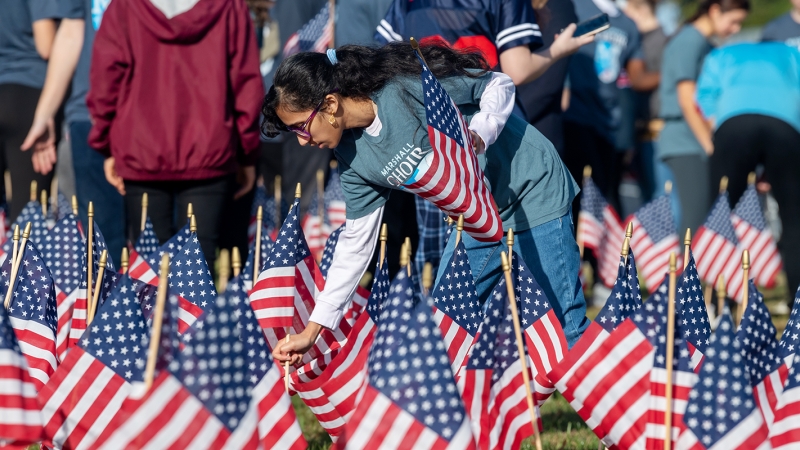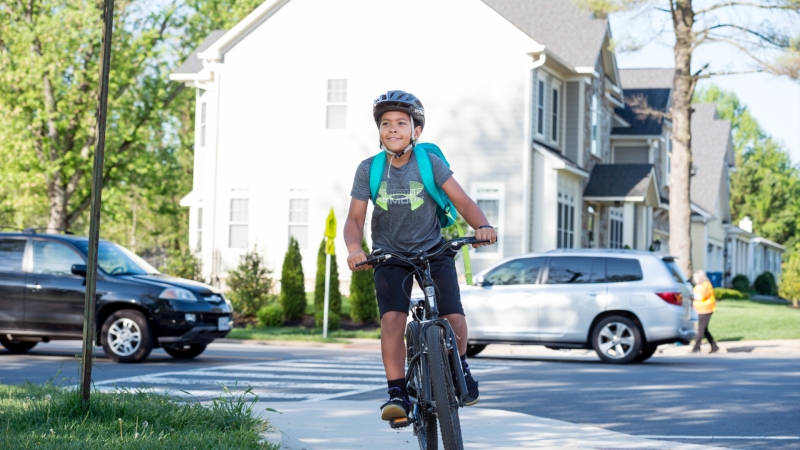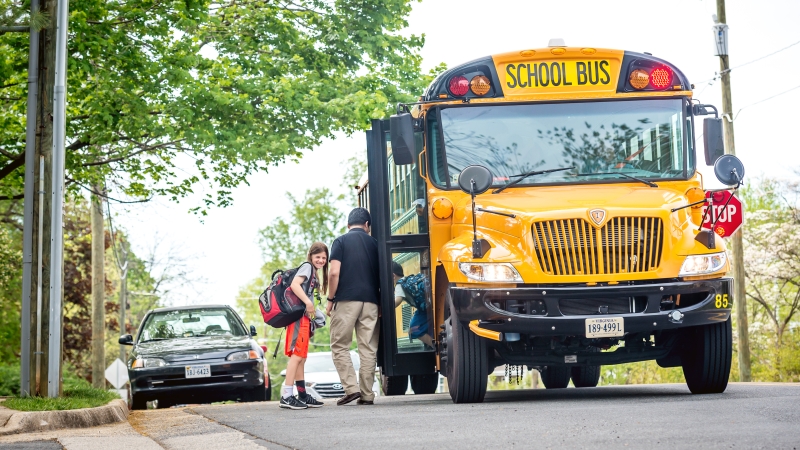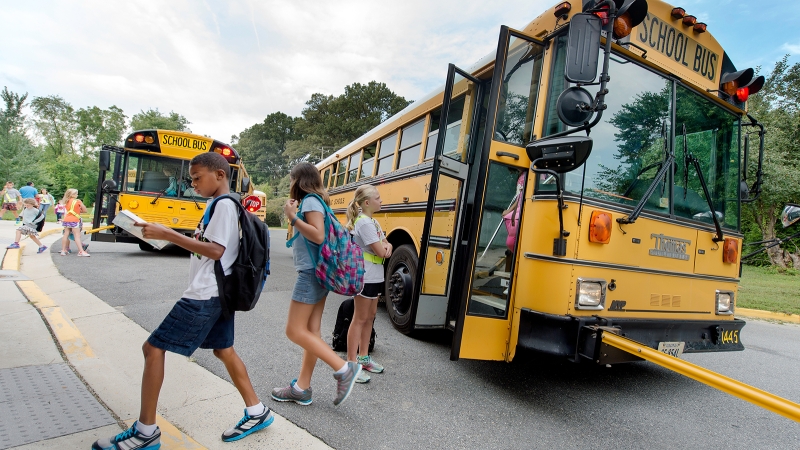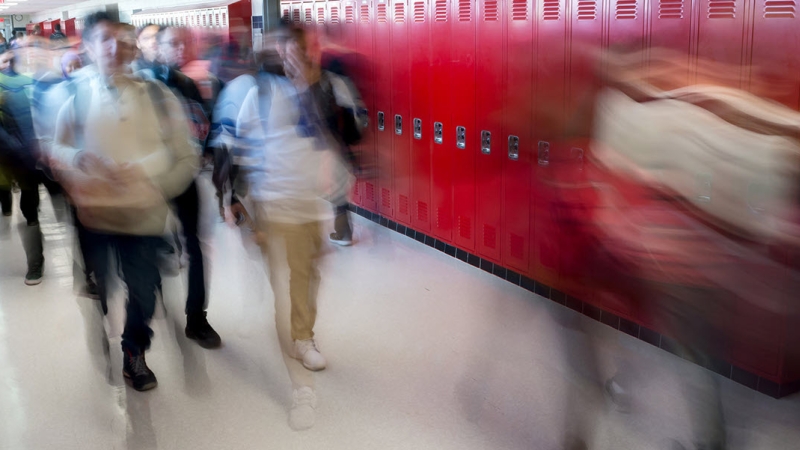
Transportation Safety Tips for the End of Daylight Saving Time
On Sunday, November 5, our clocks will “fall back” an hour, resulting in darker evening commutes. What does that mean for students? The end of Daylight Saving Time (DST) means that students and families should consider extra safety measures when traveling home from school in the evening and be patient with themselves in adjusting to the change in time.
Safe Routes to School (SRTS) encourages “active” transportation to school. Fewer students being dropped off and picked up via Kiss-n-Ride means fewer cars at schools, a safer school zone, and less pollution. Regardless of your transportation method, consider the daylight saving safety tips below:
When walking or biking home from school:
- Wear bright colors. Winter means shorter days, and it might be darker on the way home from school. Students should wear bright colors to be spotted easily by drivers, or wear a backpack, jacket, or hat featuring reflective fabric.
- Don’t go alone. If old enough to walk or bike without an adult, arrange travel home with a friend or group. Parents with younger children may want to reconsider having them walk during the winter months with less daylight.
- Stay alert. It is easy for students to get distracted by their phone, cars, and other pedestrians when walking to school. Remind them to keep alert and aware of their surroundings, and walk on the designated sidewalk or walkway.
- Cross the street safely. Students should maintain focus and look for oncoming traffic in both directions before crossing the street. It's also important for them to continue looking for vehicles until they have finished crossing.
When riding the bus:
- Get to the bus stop early. Arrive at least five minutes before the bus is scheduled to arrive at the bus stop. Ensure that your child is 6 feet (or three giant steps) away from the curb/roadway at all times.
- Get on, off, and ride the bus safely. Remind them to wait until the bus is completely stopped and the door is open before attempting to enter or exit, and use the handrail on the stairs. When the bus is in motion, everyone should stay seated, keep all body parts and school materials inside the bus, ensure the aisle is clear of books and bags, and use a seatbelt if one is provided.
- Always use caution around the bus. The United States Department of Transportation states that almost all bus-related injuries involving children happen outside and around the bus. The ”danger zone” is considered 10 feet around the bus on all sides. Students should never walk behind a school bus and always make eye contact with the bus driver before crossing (at least 10 feet) in front of the bus to ensure that you are seen. If your child drops something near the school bus like a phone or a book, the safest thing for them to do is to tell the bus driver right away before attempting to retrieve the item.
When adjusting to the time change:
- Create a routine. For children, it is especially important to create and stick with a routine to adjust to the change in time. Routines create structure and promote mental, physical, and emotional health. For example: set specific times to have electronics off, be in bed, and have lights out.
- Be sympathetic. Adjusting sleep patterns will affect everyone differently. Remember to be patient during this time.
- Get enough sleep. According to Johns Hopkins Medicine, “Studies have shown that kids who regularly get an adequate amount of sleep have improved attention, behavior, learning, memory, and overall mental and physical health.” Identify the baseline amount of hours your child needs to feel rested and ensure their bedtime routine reflects this each day.
As always, we thank parents for their patience and understanding when bus delays occur. Did you know that FCPS has up-to-date school bus arrival times via Bus Delay Notification System and on the Here Comes the Bus Mobile App? Also, every Fairfax County public school has a transportation contact to assist with your transportation questions and concerns. For emergencies after hours, contact Safety and Security at 571-423-2000.
Note: This article was originally published in November 2022 and then updated for November 2023.
